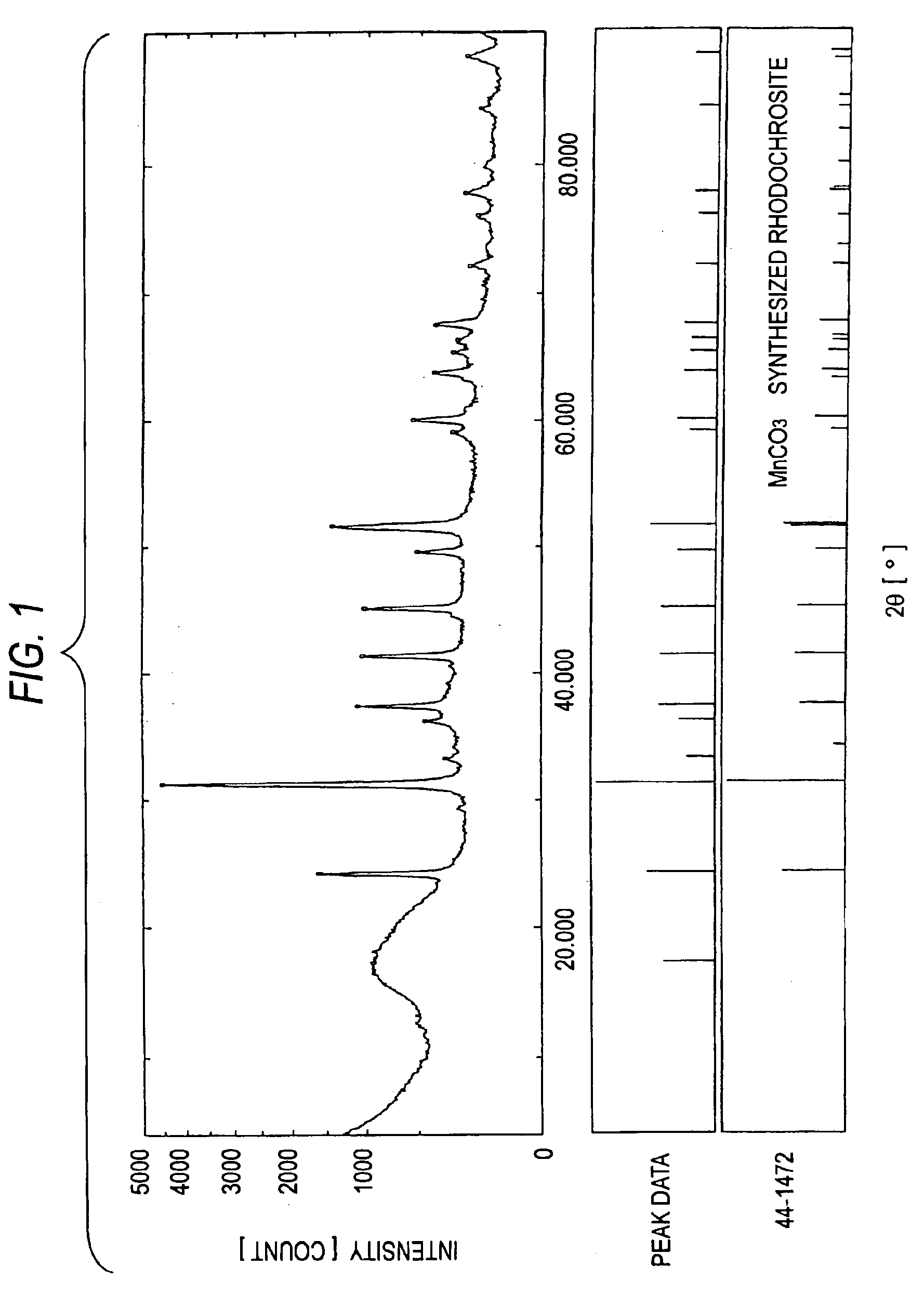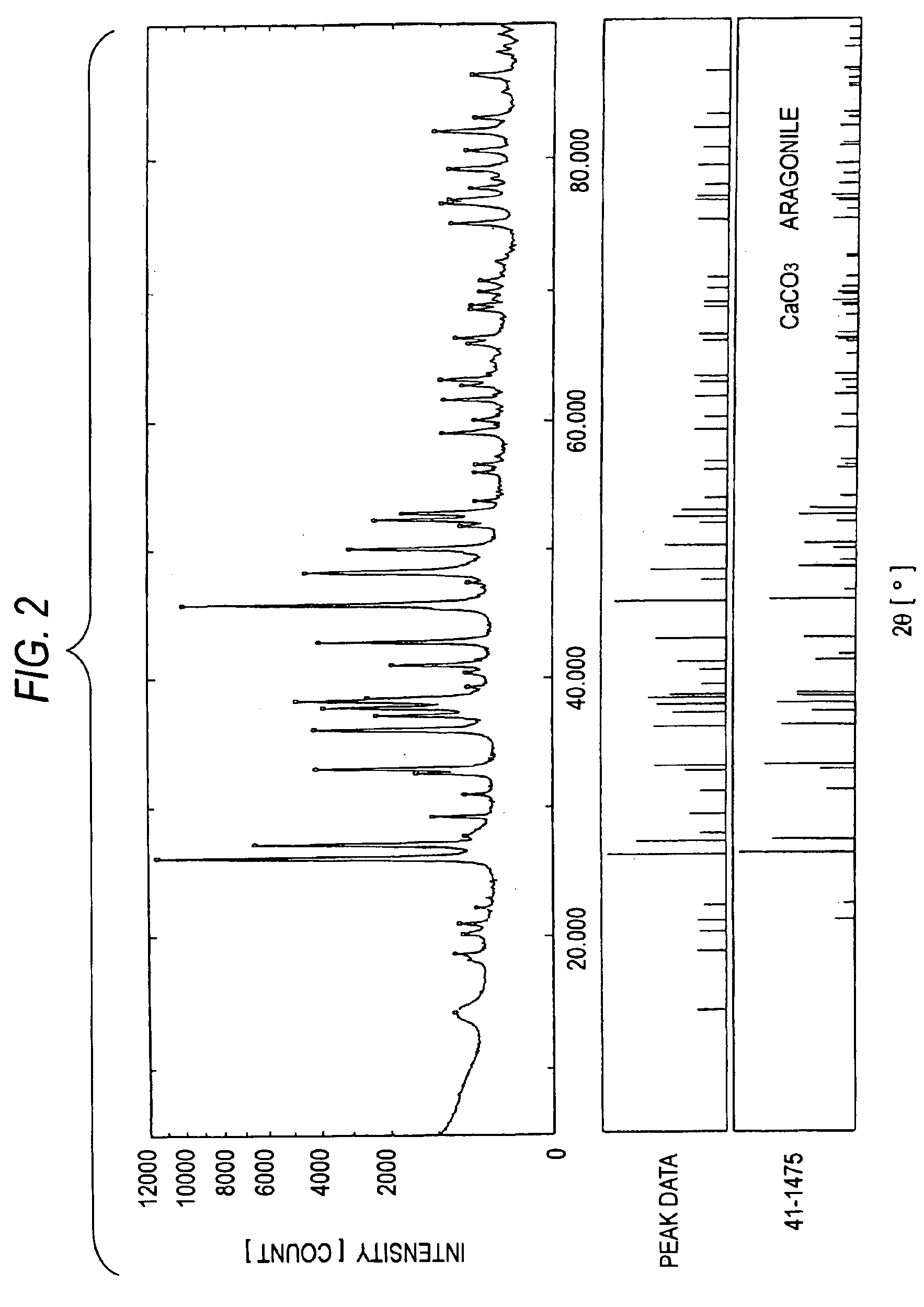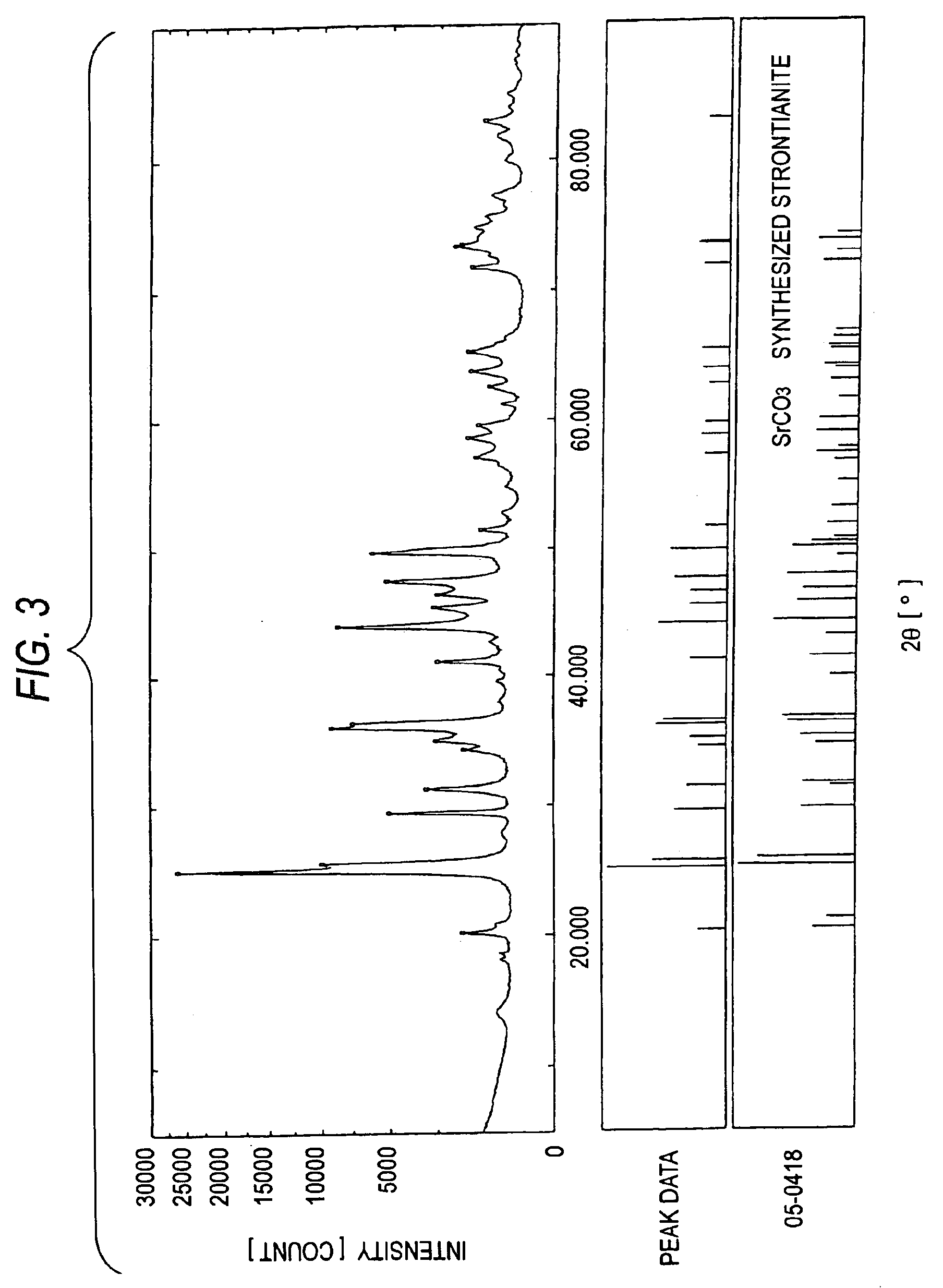Catalyst for fluidized catalytic cracking of heavy hydrocarbon oil and method of fluidized catalytic cracking
- Summary
- Abstract
- Description
- Claims
- Application Information
AI Technical Summary
Benefits of technology
Problems solved by technology
Method used
Image
Examples
example 1
[0105]In a 3-liter (hereinafter, liter is referred to as “L” and milliliter is referred to as “mL”) glass beaker containing 1,000 mL of distillation-purified water, 271.9 g of manganese sulfate pentahydrate was dissolved, followed by stirring with a magnetic stirrer for 15 minutes to prepare Solution A. Solution A had a pH of 4.54.
[0106]In a 3-L glass beaker containing 1,000 mL of distillation-purified water, 125 g of aluminum sulfate octadecahydrate was dissolved, followed by stirring with a magnetic stirrer for 15 minutes to prepare Solution B. Solution B had a pH of 1.63.
[0107]Solution A was mixed with Solution B in a 5-L glass beaker, heated to 80° C. and stirred with a magnetic stirrer to prepare Solution C.
[0108]In a 5-L glass beaker containing 1,000 mL of distillation-purified water, 113.8 g of sodium carbonate was dissolved, followed by heating to 80° C. and stirring with an ultradisperser for 15 minutes to prepare Solution D. Solution D had a pH of 11.47.
[0109]While stirrin...
example 2
[0119]Crystalline metal compounds were prepared in the same manner as in Example 1, except that the bivalent metal was replaced with Ca2+, Sr2+, Ba2+ or Sn2+ by using the chloride or nitrate of the metal in Solution A in Example 1 in an amount equimolar to the manganese sulfate.
[0120]The crystalline metal compounds prepared using Ca2+, Sr2+, Ba2+ and Sn2+ as bivalent metals are referred to as MC-2 (Ca—Al—CO3), MC-3 (Sr—Al—CO3), MC-4 (Ba—Al—CO3) and MC-5 (Sn—Al—CO3), respectively.
[0121]APS and SA of MC-2, MC-3, MC-4 and MC-5 were examined, and the metal compositions were ascertained with an ICP apparatus. The results are shown in Table 1.
[0122]Furthermore, an XRD apparatus was used to analyze the crystal structures of MC-2 to MC-4. The results are shown in FIGS. 2 to 4. In FIGS. 2 to 4, the data in the upper, middle, and lower sections have the same meanings as in FIG. 1. FIGS. 2 to 4 clearly show that each of MC-2 to MC-4 has the crystal structure of a bivalent-metal carbonate.
example 3
[0123]A crystalline metal compound was prepared in the same manner as in Example 1, except that the trivalent metal was replaced with an other metal by using the sulfate or nitrate of the trivalent metal in Solution B in Example 1 in an amount equimolar to the aluminum sulfate.
[0124]The crystalline metal compound prepared using Mn3+ as a trivalent metal is referred to as MC-6 (Mn—Mn—CO3).
[0125]APS and SA of MC-6 was examined, and the metal composition was ascertained with an ICP apparatus. The results are shown in Table 1.
PUM
| Property | Measurement | Unit |
|---|---|---|
| Length | aaaaa | aaaaa |
| Length | aaaaa | aaaaa |
| Density | aaaaa | aaaaa |
Abstract
Description
Claims
Application Information
 Login to View More
Login to View More - R&D
- Intellectual Property
- Life Sciences
- Materials
- Tech Scout
- Unparalleled Data Quality
- Higher Quality Content
- 60% Fewer Hallucinations
Browse by: Latest US Patents, China's latest patents, Technical Efficacy Thesaurus, Application Domain, Technology Topic, Popular Technical Reports.
© 2025 PatSnap. All rights reserved.Legal|Privacy policy|Modern Slavery Act Transparency Statement|Sitemap|About US| Contact US: help@patsnap.com



